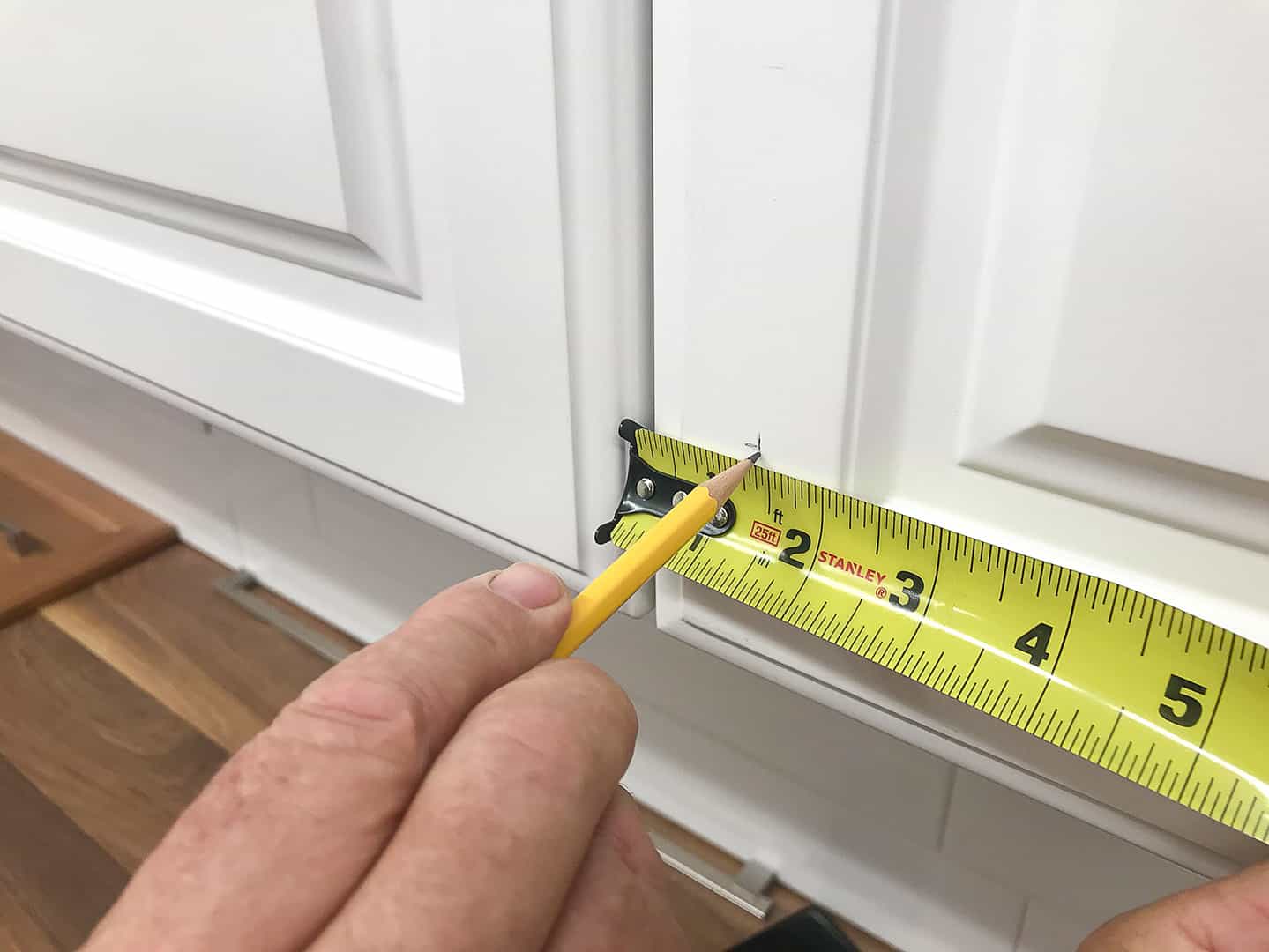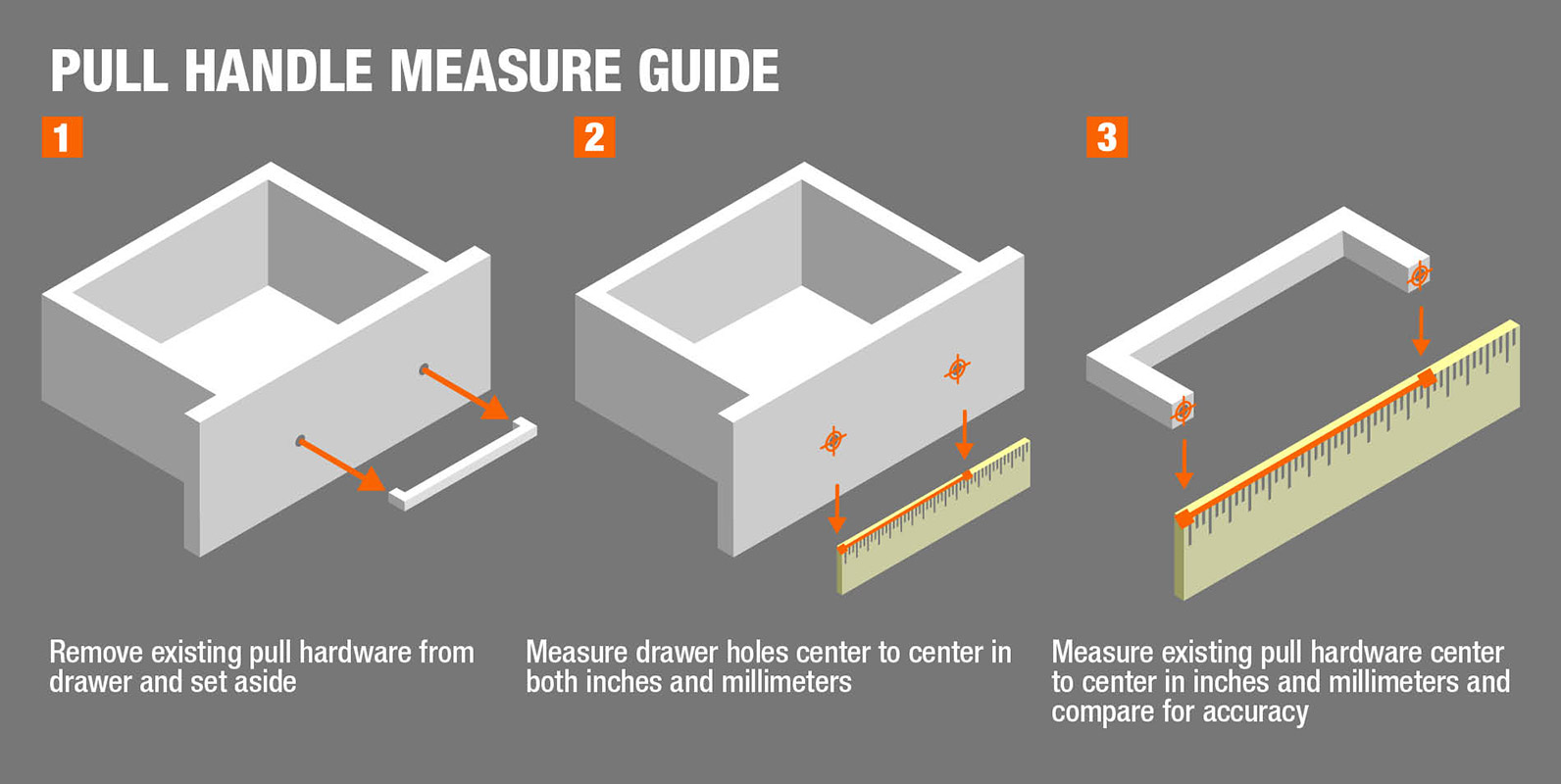Understanding Cabinet Handle Dimensions

Choosing the right cabinet handles is crucial for both aesthetics and functionality. The size and style of your handles can significantly impact the overall look of your kitchen or bathroom, as well as how easily you can open and close your cabinets. To ensure you select the perfect handles for your project, understanding the standard measurements is essential.
Cabinet Handle Dimensions
Cabinet handles are typically measured by their length, width, and projection.
- Length: The length of a cabinet handle refers to the distance between the two mounting points. It is usually measured in inches or millimeters.
- Width: The width of a cabinet handle is the distance between the two sides of the handle. It is also typically measured in inches or millimeters.
- Projection: The projection of a cabinet handle is the distance that the handle extends from the cabinet door. This measurement is important for determining how much space the handle will take up when the door is closed.
Handle Styles and Dimensions, How to measure cabinet handles
The dimensions of cabinet handles vary depending on the style. Here is a table comparing some popular handle styles and their typical dimensions:
| Handle Style | Length (Inches) | Width (Inches) | Projection (Inches) |
|---|---|---|---|
| Bar Pull | 3-12 | 1/2-1 | 1-2 |
| Cup Pull | 1-3 | 1-2 | 1-2 |
| Knobs | 1-2 | 1-2 | 1-2 |
| T-Pull | 3-6 | 1-2 | 1-2 |
Handle Size and Cabinet Door Design
The size of the cabinet handle can impact the design and functionality of the cabinet door. For example, a large bar pull on a small cabinet door might look awkward and could make it difficult to open the door. Conversely, a small knob on a large cabinet door might be difficult to grip.
It is important to consider the size of the cabinet door and the overall design of your kitchen or bathroom when selecting cabinet handles.
Handle Size and Functionality
The size of the cabinet handle can also impact its functionality. A large handle might be easier to grip, but it could also take up more space and make it difficult to open the cabinet door if it is close to other cabinets. A small handle might be more discreet, but it could be more difficult to grip, especially for people with small hands.
Measuring Existing Cabinet Handles: How To Measure Cabinet Handles

Sometimes, you need to replace cabinet handles but don’t know the dimensions. Measuring existing handles accurately is crucial for finding suitable replacements. This guide will help you measure your current handles and understand the key dimensions.
Using a Ruler or Measuring Tape
- Choose the Right Tool: Use a ruler or measuring tape with clear markings and a firm edge. A metal ruler is preferred for accurate measurements.
- Align the Tool: Place the ruler or measuring tape flat against the handle, aligning it with the edge of the handle. Make sure the tool is perpendicular to the handle’s surface.
- Read the Measurements: Read the measurement where the tool intersects the handle. Be sure to note the unit of measurement, whether it’s inches or centimeters.
Identifying Key Dimensions
- Center-to-Center Distance: This is the most crucial dimension for cabinet handles. It’s the distance between the centers of the mounting holes. Measure the distance between the centers of the holes on the handle. This dimension ensures that the new handle fits correctly on the cabinet door.
- Projection: This refers to how far the handle extends out from the cabinet door. Measure the distance from the surface of the cabinet door to the furthest point of the handle. This dimension helps you choose a handle with a similar projection to maintain the overall look and feel of your cabinets.
- Overall Length: This is the total length of the handle, including the mounting holes. Measure the distance between the outermost points of the handle. This dimension helps you find a replacement handle that is the same length as the existing one.
Recording Measurements
Once you have measured the handle, record the dimensions in a notebook or on a piece of paper. Include the unit of measurement (inches or centimeters). For example:
Center-to-Center: 3 inches
Projection: 1 inch
Overall Length: 5 inches
These measurements will help you find the perfect replacement handle for your cabinets.
Selecting the Right Handle Size for Your Cabinets

Choosing the right cabinet handle size is crucial for both functionality and aesthetics. The perfect size will ensure easy opening and closing, while complementing your cabinets’ style and design.
Cabinet Door Weight and Opening Ease
The weight of your cabinet doors is a significant factor when choosing handle size. Heavier doors require larger handles to provide a comfortable grip and sufficient leverage for opening. Consider these factors:
- Smaller handles are suitable for lighter cabinet doors, such as those found in kitchen cabinets with minimal storage.
- Larger handles are recommended for heavier doors, like those on pantry cabinets or cabinets with large, bulky items.
The handle’s length also impacts opening ease. Longer handles offer better leverage, making it easier to open heavy doors. For example, a 6-inch handle provides more leverage than a 3-inch handle, allowing for smoother opening and closing.
Cabinet Style and Design
The style and design of your cabinets play a crucial role in selecting the appropriate handle size. Consider these factors:
- Modern cabinets often feature minimalist designs with sleek, small handles. This creates a clean and uncluttered aesthetic.
- Traditional cabinets often incorporate larger, more ornate handles that complement the classic design elements.
- Rustic cabinets may benefit from larger, chunky handles that enhance the rustic charm.
Pro Tip: Consider the overall size of your cabinets when choosing handle size. Smaller cabinets may look disproportionate with large handles, while larger cabinets may require larger handles for balance.
How to measure cabinet handles – Before you embark on the grand quest of measuring cabinet handles, consider the grander scheme of things. A stunning oak shoe cabinet uk might be the perfect addition to your home, a statement piece worthy of meticulous attention. But even the most exquisite cabinet deserves the right hardware, so wield your measuring tape with precision and let your vision come to life.
The perfect cabinet handle is a delicate dance of form and function. You must measure with precision, considering the size and weight of the doors, the overall aesthetic, and the historical context. Imagine, for instance, the elegant curves of a antique tiger oak cabinet demanding a handle that echoes its grandeur.
These considerations, like the whispers of history, guide the measuring process, ensuring the handles become a seamless extension of the cabinet’s soul.
